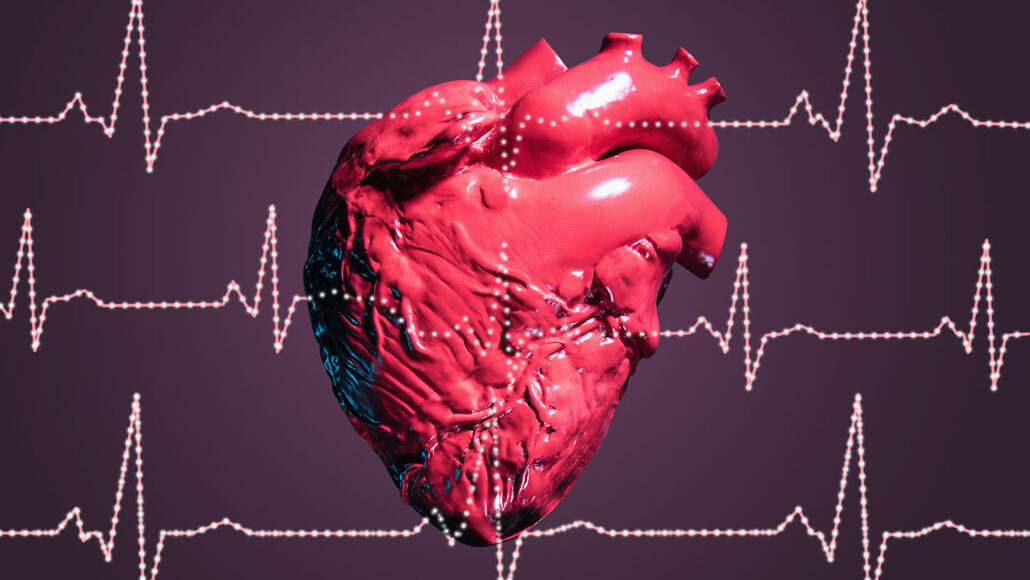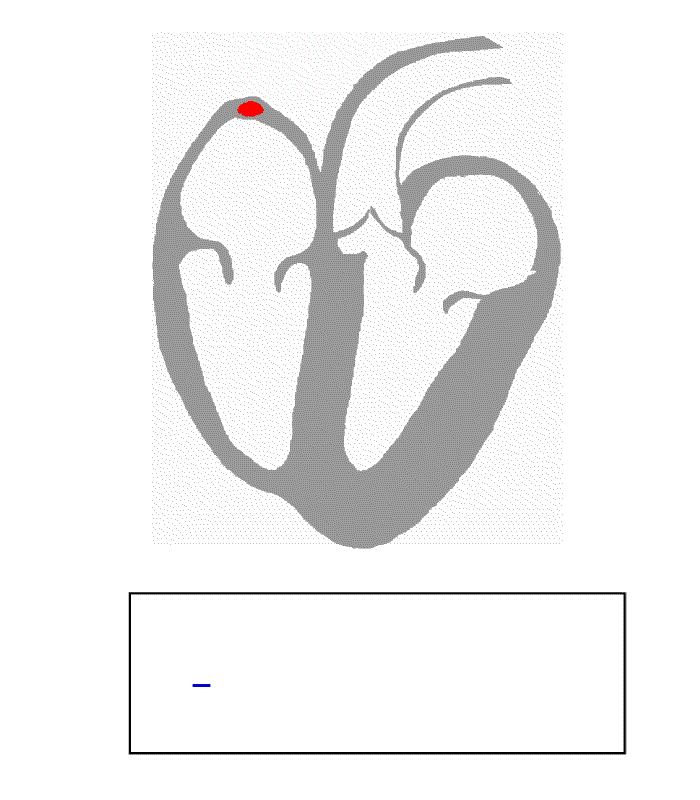Explainer: Anatomy of a heartbeat
Here’s how the heart pumps blood to each and every cell of your body

The heart beats steadily from long before you’re born to the day you die. Triggering each beat (illustrated in background by an electrocardiogram line) is a zap of electricity — literally the pulse of life.
PM Images/Stone/Getty Images Plus
Your heart beats about 100,000 times per day. That’s around 3 billion times over an average lifetime. Each beat pumps blood to the lungs, where it picks up oxygen. From there, it flows on to all of the rest of our cells, bringing nutrients and life-sustaining oxygen and carrying away wastes.
When we sit quietly in a chair, our hearts typically beat between 60 and 100 times per minute. But very fit people can have as few as 40 to 50 heartbeats per minute. When you’re exercising, stressed or angry, your heart rate will speed up. How fast? The usual estimate for how fast your heart can beat is 220 beats per minute, minus your age (in years). So a 13-year-old would have a maximum heart rate of 207 beats per minute.
Our hearts are made up of millions of muscle cells. And no matter how your heart rate changes, all of those cells still contract — and beat — in the right order. And they do it over and over without stopping.
Each heartbeat is divided into two segments, which sound like “lub-DUB.” You can hear this if you put your ear on someone’s chest or use a stethoscope. The rhythm comes from the pumping of blood as the heart’s four chambers contract.
Each beat starts in the heart’s two upper chambers — the right and left atrium. The right atrium fills with low-oxygen blood that is returning from a circuit around the body. The left atrium fills with blood coming from the lungs, where it picked up oxygen.
These atria push blood down into two bigger, muscular chambers below them — the right and left ventricles. When the ventricles are full, valves close so the blood can’t flow back to the atria. That’s the “lub” sound.
Now the ventricles contract. The right ventricle sends the low-oxygen blood to the lungs where it can pick up a new supply of oxygen. The left ventricle takes oxygen-rich blood and pumps it out to the rest of the body. Then the valves in those ventricles close to keep the blood from coming back in. That’s the “DUB” sound.
Lub-DUB. Lub-DUB. The rhythm can speed up or slow down. But it always happens in the same order.
It might be easy to think that the brain controls this action. After all, it controls our muscles and other organs. But while the heart takes some input from the brain, it has a “mind” of its own.
If the four chambers of the heart are a four-piece band, all beating in rhythm, their conductor is the sino-atrial node. It is sometimes called the SA node or sinus node. It’s the heart’s natural pacemaker.
All together now

This animation shows the electrical signal, or action potential, coming from the heart’s right sino-atrial node (at animation’s top left). That signal (in red) moves on to the atrio-ventricular node at center of the heart before spreading to the heart’s ventricles. This signal is what makes the chambers of the heart contract in a coordinated rhythm. The line at the bottom shows the electrical signal, like you might see in an electrocardiogram or EKG.
This tiny bundle of cells is about the size of two grains of rice, laying end to end. It sits atop the right atrium. Electricity sets the rate at which this pacemaker fires a zap of electricity into the heart’s two upper chambers.
That signal then travels to another clump of cells that sit between the heart’s upper and lower chambers, explains Edward Lakatta. He’s a cardiologist, or doctor who studies and treats diseases of the heart. He works at the National Institutes of Health in the Laboratory of Cardiovascular Science. It’s in Baltimore, Md. This second clump of cells makes up the AV node. That’s short for atrio-ventricular node. It’s an electrical transfer station.
The AV node shuttles an electric pacing signal down to the heart’s lower chambers. This jolts the muscle cells that make up the walls of each ventricle. Called an action potential, this zap “wakes up heart cells in the ventricle,” Lakatta says, and asks them to squeeze. This action, he explains will “pump the blood out of the bottom part of the heart and throughout your body.”
That, in a nutshell, is one heartbeat. And it happens about 60 times each minute — from before we’re born to the time we die.







